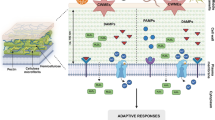Abstract
Tomato (Lycopersicon esculentum Mill.) fruits of the male sterile cultivar Pearson (MS35 BC4, 61) were transferred toin vitro culture during the cell division period. Fruits grownin vivo andin vitro were compared throughout their development according to various growth parameters: fresh and dry weight, cell number, cell diameter, and DNA and total protein content. In all cases, the values pertaining to fruits grownin vitro were significantly lower than theirin vivo counterparts. The final fresh weight of fruits transferred to culture 2, 5, or 10 days after pollination was only 0.7, 1.2, and 3.4%, respectively, of that of plant-grown fruits. The results indicate that the reduced fruit sizein vitro is related to the reduction in both cell number and cell size. It is interesting to note that the DNA content per cell increased 15-fold during the growth of the plant-grown fruits while this accumulation was only between 2-and 3-fold in all the cultured fruits. The time to first colour appearance of fruits cultured 2, 5, or 10 days after pollination was 196, 132 and 85%, respectively, of that of plant-grown fruits.
Similar content being viewed by others
References
BajajYPS and CollinsWB (1968) Some factors affecting thein vitro development of strawberry fruits. Proc Am Soc Hort Sci 93. 326–333
BaldevB, LangA and AgatepAO (1963) Gibberellin production in pea seeds developing in excised pods: effect of growth retardant AMO 1618. Science 147, 155–156
BeasleyCA and TingIP (1973) The effects of plant growth substances onin vitro fiber development from fertilized cotton ovules. Am J Bot 60, 130–139
BradleyMV and CraneJC (1955) The effect of 2, 4, 5-trichlorophenoxy-acetic acid on cell and nuclear size and endopolyploidy in parenchyma of apricot fruits. Am J Bot 42, 273–281
Bünger-KiblerS and BangerthF (1982/83) Relationship between cell number, cell size and fruit size of tomato (Lycopersicon esculentum Mill.), and those induced parthenocarpically by the application of plant growth regulators. Plant Growth Reg 1, 143–154
DaviesJW and CockingEC (1965) Changes in carbohydrates, proteins and nucleic acids during cellular development. Planta 67, 242–253
JansenLL and BonnerJ (1949) Development of fruits from excised flowers in sterile culture. Am J Bot 36, 826
KanoY and AsahiraT (1978) Effects of some plant growth regulators on the development of strawberry fruitin vitro. J Japan Soc Hort Sci 47, 195–202
KrechtingHCJM, VargaA and BruinsmaJ (1978) Absence of cytokinin biosynthesis in pea seeds developingin vitro. Z Pflanzenphysiol 87, 91–93
LowryOH, RosebroughNJ, FarrAL and RandallRJ (1951) Protein measurement with the folin phenol reagent. J Biol Chem 193, 265–275
MapelliS, FrovaC, TortiG and SoressiGP (1978) Relationship between set, development and activities of growth regulators in tomato fruits. Plant and Cell Physiol 19, 1281–1288
McGlassonWB and AdatoI (1977) Relationship between the capacity to ripen and ontogeny in tomato fruits. Aust J Plant Physiol 4, 451–458
MonseliseSP, VargaA and BruinsmaJ (1978) Growth analysis of the tomato fruit,Lycopersicon esculentum Mill. Ann Bot 42, 1245–1247
MurashigeT and SkoogF (1962) A revised medium for rapid growth and bioassays with tobacco tissue cultures. Physiol Plant 15, 473–497
NitschJP (1951) Growth and developmentin vitro of excised ovaries. Am J Bot 38, 566–577
TustanoffER and BartleyW (1964) The effect of glucose on the development of respiration by anaerobically grown yeast. Can J Biochem 42, 651–655
VargaA and BruinsmaJ (1976) Roles of seeds and auxins in tomato fruit growth. Z Pflanzenphysiol 80, 95–104
WittenbachVA and BukovacMJ (1980)In vitro culture of sour cherry fruits. J Am Soc Hort Sci 105, 277–279
Author information
Authors and Affiliations
Rights and permissions
About this article
Cite this article
Teitel, D.C., Arad, S.(., Birnbaum, E. et al. Growth and development of tomato fruitsin vivo andin vitro . Plant Growth Regul 3, 179–189 (1985). https://doi.org/10.1007/BF01806057
Received:
Revised:
Accepted:
Issue Date:
DOI: https://doi.org/10.1007/BF01806057




